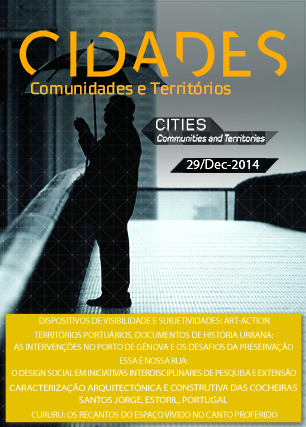Cururu: os recantos do espaço vivido no canto proferido
Palabras clave:
tempo-espaço, cidades paulistas, cultura, caipira, cururuResumen
Este artigo apresenta um dos mais típicos habitantes do interior dos sertões brasileiros e uma de suas práticas culturais, o caipira e o cururu. Indivíduo em grande contato com a natureza e fruto da miscigenação entre portugueses e índios, foi um dos principais povoadores e desbravadores dos sertões desde as caravanas articuladas pelo governo português em busca de ouro e mão de obra escrava indígena, as denominadas bandeiras. Após a coroa portuguesa se desinteressar pela já decadente e rala economia aurífera e pelas mal fadadas tentativas de implantação da monocultura açucareira no século XVI, aos poucos se fixaria nas antigas paragens formadas ao longo dos caminhos que percorria, tornando-se algumas dessas em freguesias, vilas e posteriormente cidades. Desta maneira, o artigo visa apresentar, a partir de uma sucinta exposição do caipira, não só a importância da herança cultural incorporada pelos povos que lhe deram origem, mas também a relação com o espaço que nutriu no decorrer do desbravamento que realizava pelos sertões, principalmente o paulista. Desta forma, o artigo esboça um pouco da cultura desse tipo humano por intermédio do cururu, sua manifestação musical mais típica e ainda resistente nos meios urbanizados do interior do estado de São Paulo, fazendo com que esta representação sócio-espacial ainda se mantenha viva neste canto. O cururu seria então entendido aqui não só como uma ferramenta que evidencia um passado existente, mas uma articulação entre tradição (identidade) e memória que ainda realça sua importância no presente.
Descargas
Publicado
Número
Sección
Licencia
Cidades, Comunidades e Territórios by DINÂMIA'CET-IUL is licensed under a Creative Commons Atribuição-Uso Não-Comercial-Proibição de realização de Obras Derivadas 4.0 Unported License.Permissions beyond the scope of this license may be available at mailto:cidades.dinamiacet@iscte.pt.






